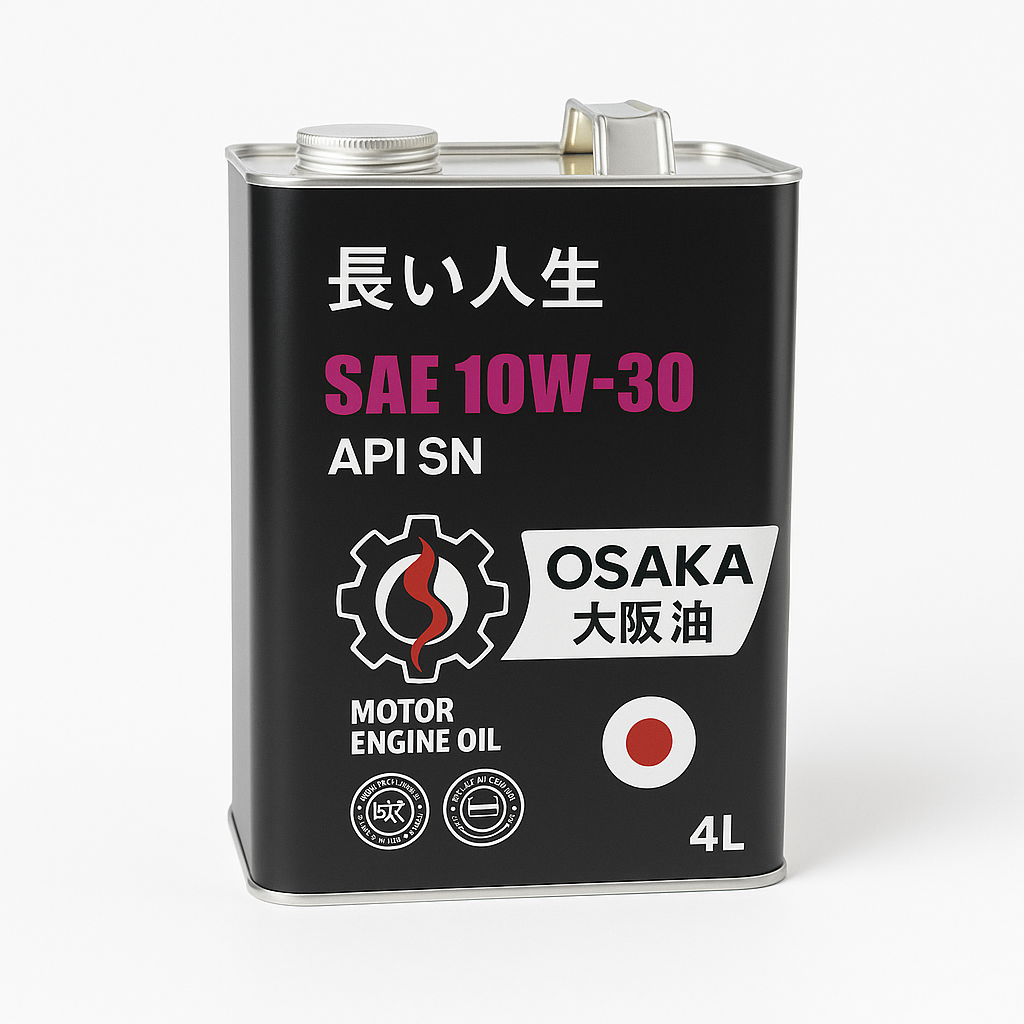主な特長
高い清浄分散性
スラッジ・デポジットを抑制し、内部をクリーンに。
摩耗・腐食の低減
金属表面に保護被膜を形成し耐久性を向上。
低温始動性
寒冷時でも素早く循環し、始動直後の負荷を軽減。
熱安定性
高温下でも粘度低下を抑え、長時間の走行に強い。
製品写真



* 画像はサンプルの再現レンダーです。実際のデザインはロットにより一部異なる場合があります。
仕様・適合
粘度グレード
例:10W-30 / 5W-30 / 10W-40 など。車両指定をご確認のうえお選びください。
規格
API SN ほかメーカー指定に準拠するグレードをご用意(地域・在庫により異なります)。
交換目安
5,000–10,000 km 目安。シビアコンディションでは早めの交換を推奨。
よくある質問
純正オイルからの切り替えは?
粘度・規格が合致していれば切替可能。初回は早めの交換を推奨します。
ターボ車でも大丈夫?
耐酸化・熱安定性に優れ、ターボ搭載車にも適合。指定グレードでご使用ください。
購入先は?
正規販売パートナーまたは当サイトへお問い合わせください。
保管方法は?
直射日光・高温多湿を避け密閉保管。開封後はお早めにご使用ください。

在庫・価格・導入のご相談
卸販売・店舗導入も承ります。フォームまたはチャットでお問い合わせください。
今すぐ問い合わせるお問い合わせ
フォーム(サンプル)
所在地
Osaka Oil 販売窓口(サンプル)
日本・海外出荷に対応
